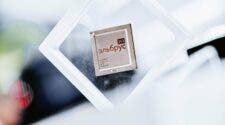The world of tech is brimming with innovation. But for hobbyists and makers, bringing ideas to life can sometimes feel expensive. Enter the single-board computers (SBCs). It is a revolutionary device that puts immense computing power at your fingertips.
Forget bulky towers and tangled wires. SBCs simplify the process by integrating everything you need. That includes the processor, memory, and core functionalities. All that is integrated into one neat package. This makes them affordable and perfect for crafting your next ingenious project.
Orange Pi 5 Plus – One of the Most Powerful Single-board Computers

The crown jewel of single-board computers in 2024 is arguably the Orange Pi 5 Plus. This mighty SBC boasts a powerful Rockchip RK3588 CPU. It features:
-
Four high-performance Cortex-A76 cores clocked at 2.4GHz for demanding tasks.
-
Four energy-efficient Cortex-A55 cores at 1.8GHz for everyday use.
But the muscle doesn’t stop there. The Orange Pi 5 Plus packs a Mali-G610 GPU capable of stunning 8K video output at a smooth 60 frames per second. And when it comes to memory, you have options – choose from 4GB, 8GB, 16GB, or even a whopping 32GB of RAM to suit your project’s needs.
Storage is versatile too. Pop in a MicroSD card or eMMC flash storage for quick access. Need even more space? Take advantage of the built-in M.2 slot, perfect for blazing-fast NVMe SSDs.
Raspberry Pi 5 – One of the Most Popular Single-board Computers

Another strong contender in the SBC arena is the ever-popular Raspberry Pi 5. Building upon the success of its predecessor, the Pi 4 Model B, the Raspberry Pi 5 offers a compelling upgrade for those seeking more processing muscle and improved connectivity.
It retains the familiar quad-core design. But the Pi 5 steps things up with faster, more modern Cortex-A76 cores humming along at 2.4GHz. This translates to smoother performance for demanding tasks. You also get the option of up to 8GB of RAM, ensuring your projects have ample breathing room.
The Pi 5 doesn’t skimp on storage either. It features a high-speed microSD card interface for quick access, along with familiar expansion options like USB and PCIe for connecting extra peripaherals.
What sets the Raspberry Pi 5 apart is its legendary after-sales support and a massive user community. A wealth of online resources, tutorials, and forums are available. They provide invaluable help as you bring your creations to life. Many retailers even offer Raspberry Pi 5 kits. These include essential accessories, streamlining the setup process.
Libre Computer Board AML-S905X-CC (Le Potato) – Best Budget SBC

Seeking an affordable entry point into the world of SBCs? the Libre Computer Board AML-S905X-CC, affectionately nicknamed “Le Potato,” is a fantastic choice. Don’t let its unassuming stature fool you – Le Potato packs enough punch to tackle a variety of projects without breaking the bank.
While it won’t win any raw power contests, Le Potato boasts a quad-core Cortex-A53 CPU at 1.5GHz, capable of handling everyday tasks. A Mali-450 GPU ensures smooth visuals, even supporting 4K resolutions. Memory options come in 1GB or 2GB flavors, allowing you to tailor the board to your specific needs.
When it comes to connectivity, Le Potato offers a solid selection. Four USB 2.0 ports provide ample options for connecting peripherals, while an HDMI 2.0 port ensures stunning visuals. Storage expandability is covered with a microSD card slot and an eMMC interface. And for tinkering enthusiasts, a 40-pin GPIO interface unlocks a world of creative possibilities.
Le Potato is particularly enticing for beginners. It’s easy on the wallet and supports popular Linux distributions like Ubuntu, Debian, and Raspbian. Plus, it boasts lower power consumption compared to the Raspberry Pi 3 B+, making it an energy-efficient option.
The LattePanda Mu – Best SBC with Windows

Looking for a single-board computer that packs a serious punch? Look no further than the LattePanda Mu, an x86-based SBC designed for performance.
Its Intel N100 CPU delivers exceptional processing power, outperforming similarly priced competitors. But it’s not only about internal muscle. The LattePanda Mu boasts a rich connection suite – three HDMI/DisplayPort outputs, 64-pin GPIO, and many USB and PCIe lanes – making it a versatile tool for makers.
What sets the LattePanda Mu apart is its customizability. Design your own carrier board using open-source files, or choose from pre-configured options like the Lite carrier board with Gigabit Ethernet, M.2 slots, and many USB ports. This flexibility allows you to transform the LattePanda Mu into a powerful machine capable of running any x86-compatible OS, including Windows.
While the price might be a consideration, especially with the Lite carrier board, the LattePanda Mu offers unmatched power and customization for x86 enthusiasts. If budget is a concern, consider the ODROID-H3 for a pre-built option, or the LattePanda V1 for a Windows-loaded experience.
The choice is yours, but for raw x86 power and tinker-friendly customization, the LattePanda Mu is a beast of a board.





